KIMEP Department of General Education Introduction to Environmental

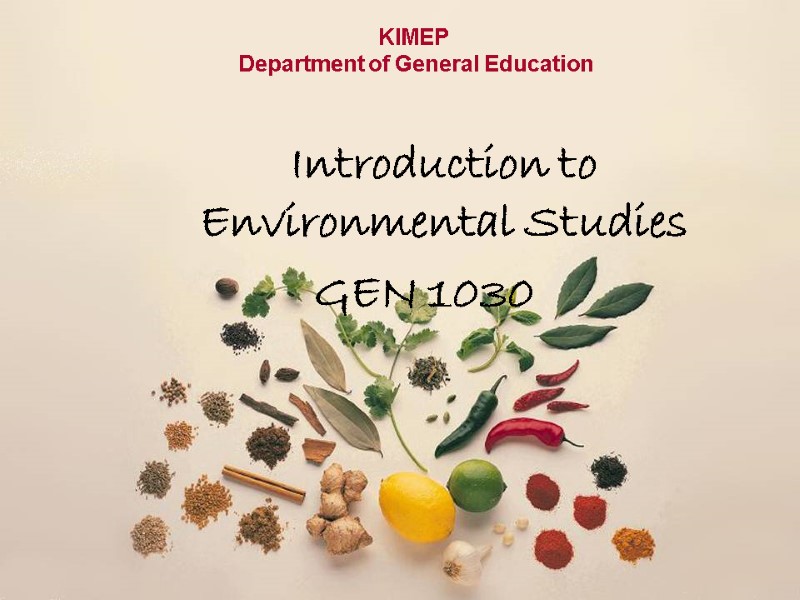
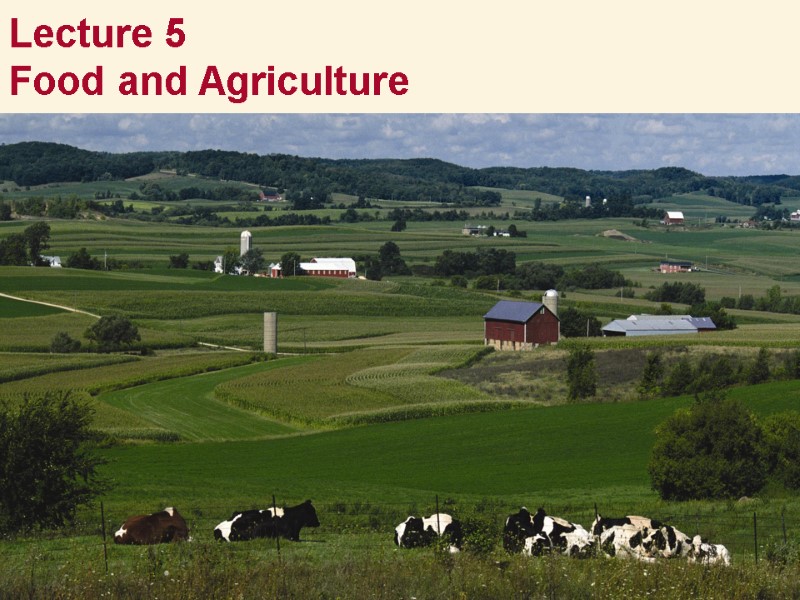
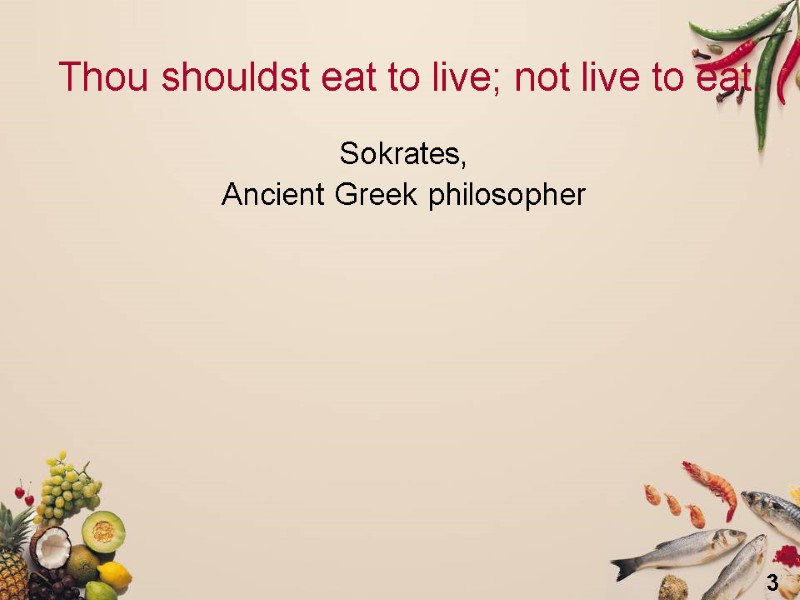
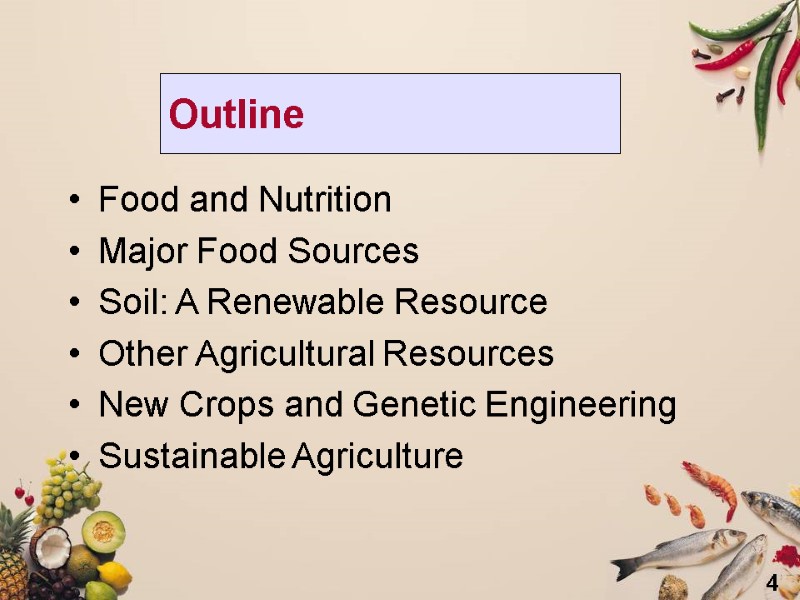
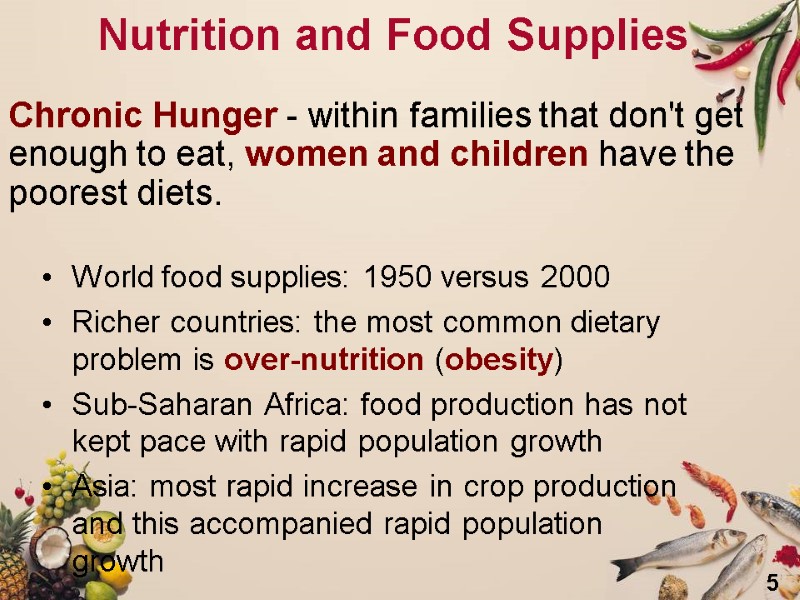
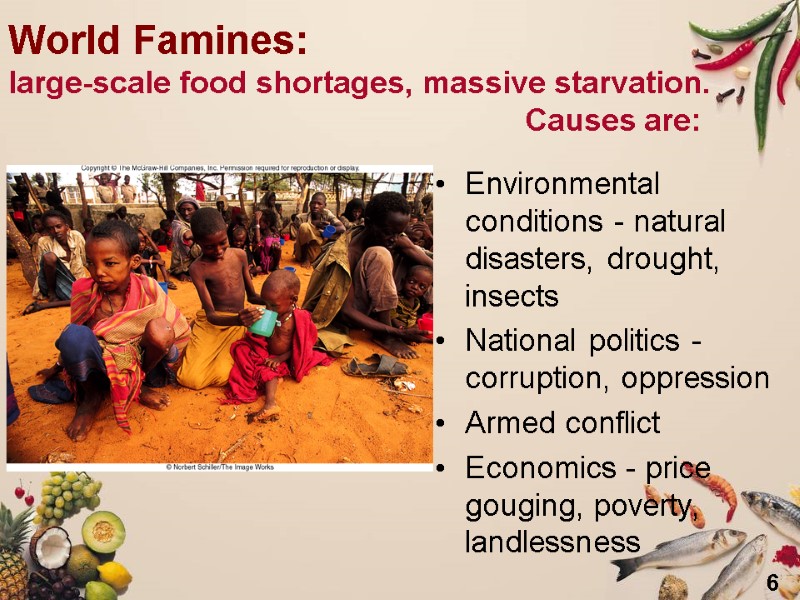
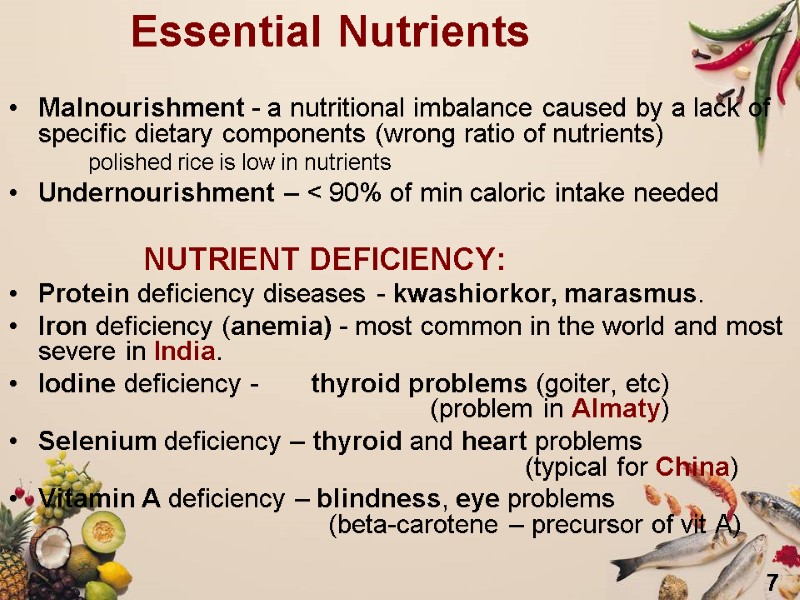
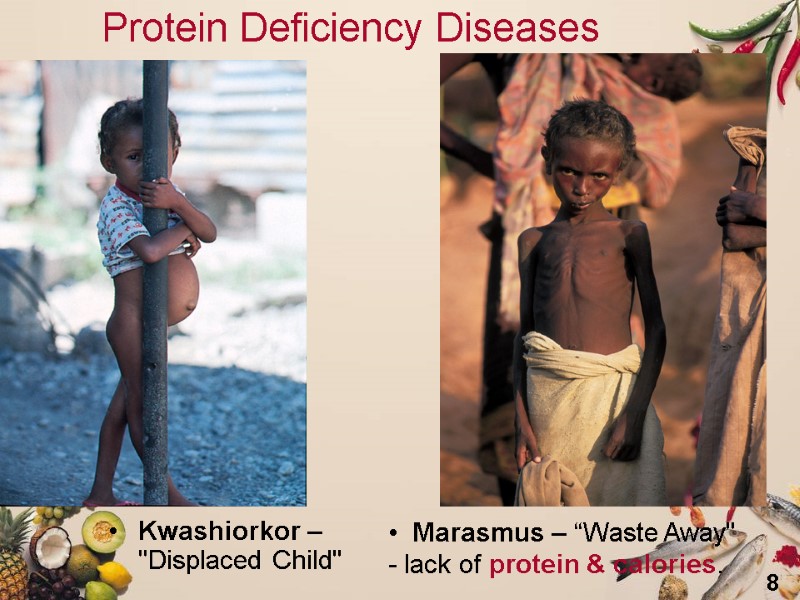
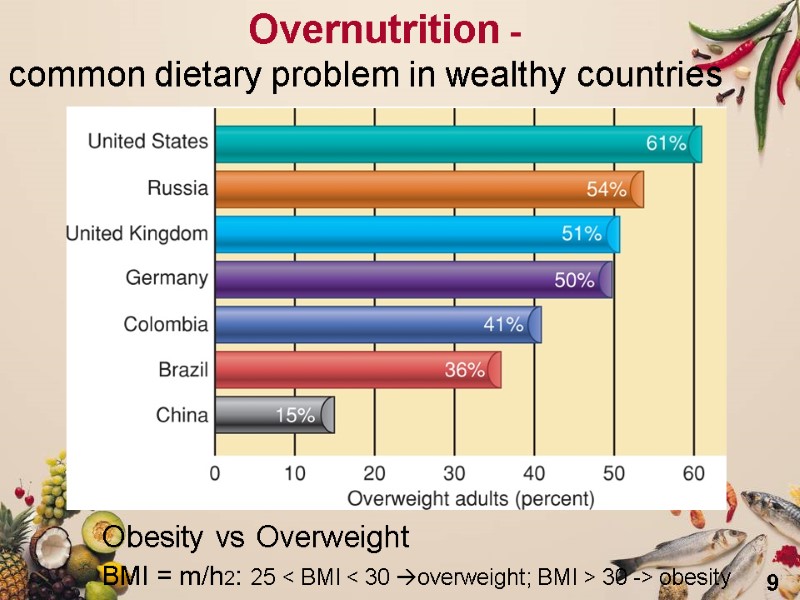
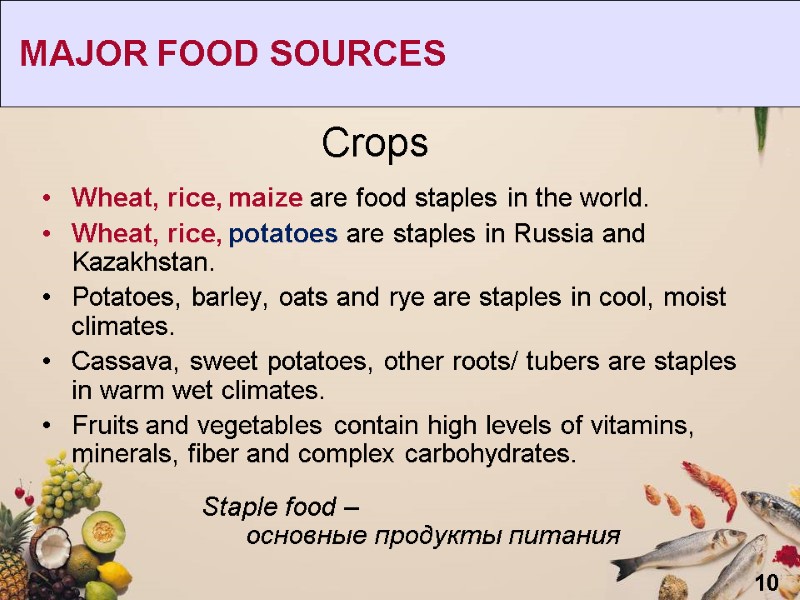
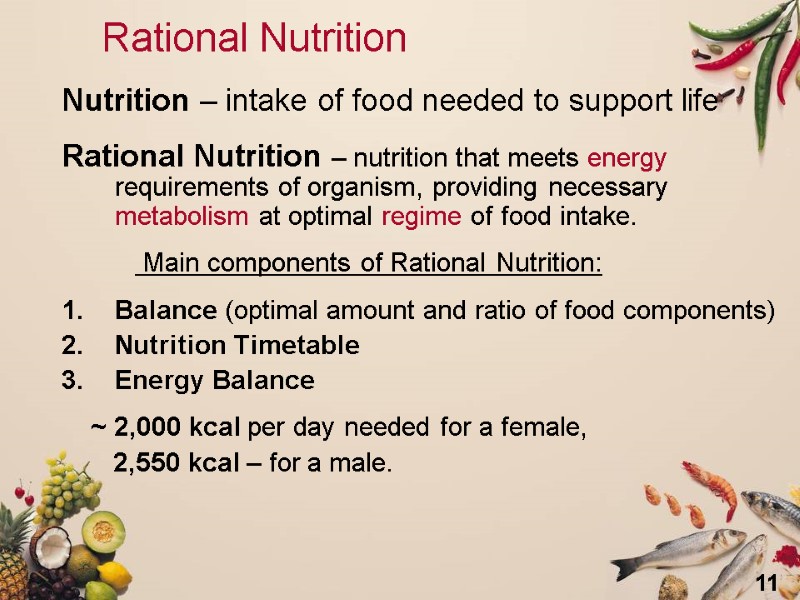
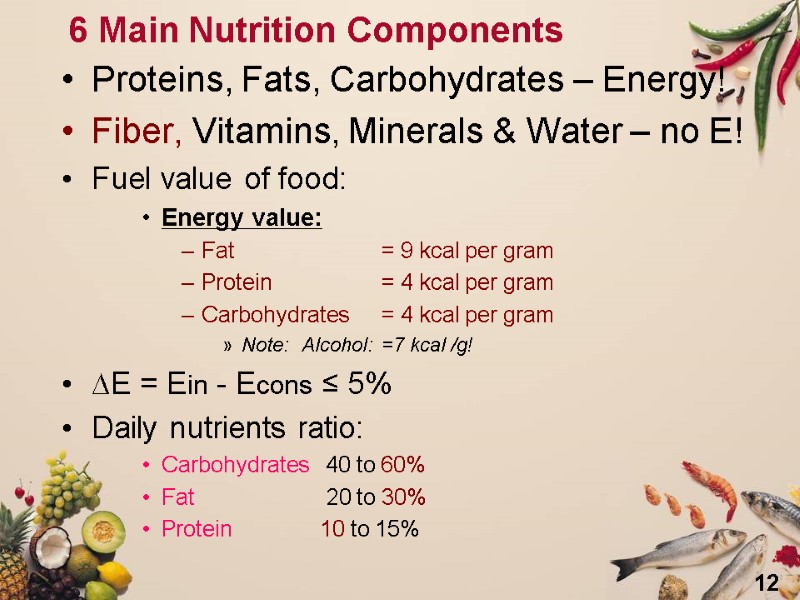
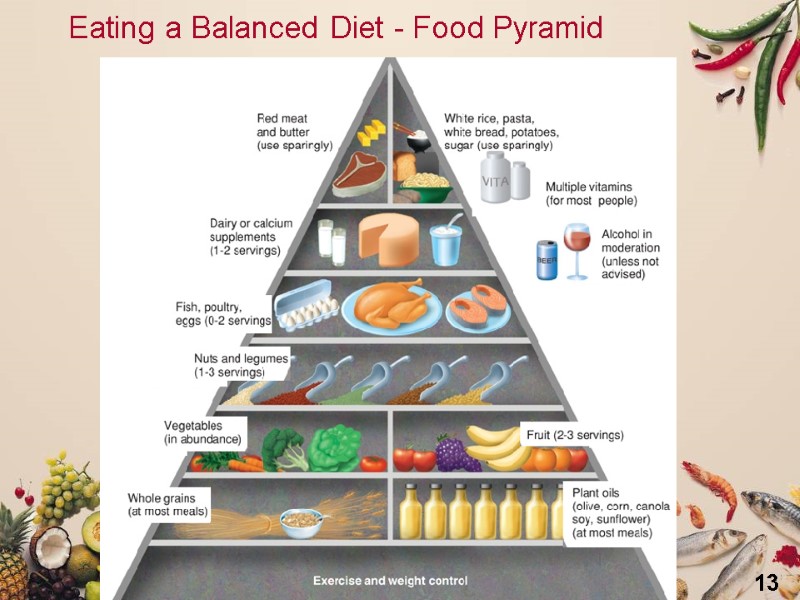
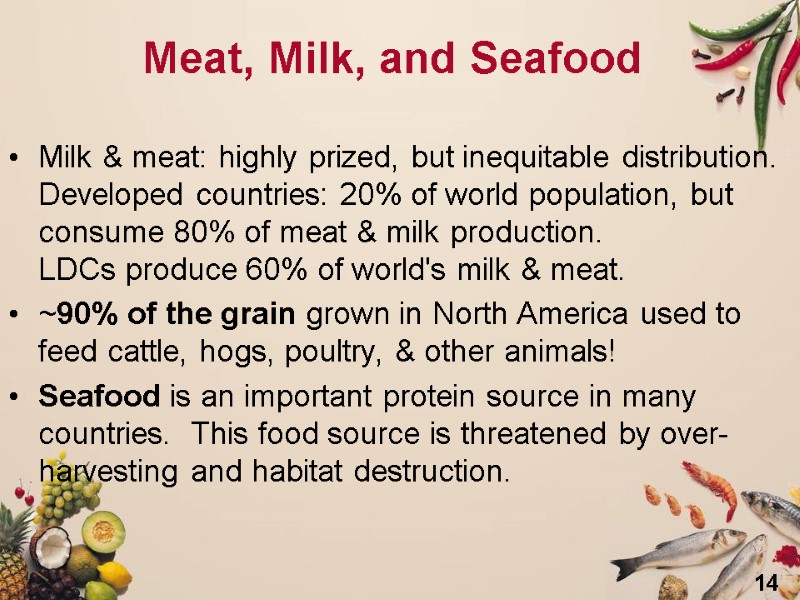
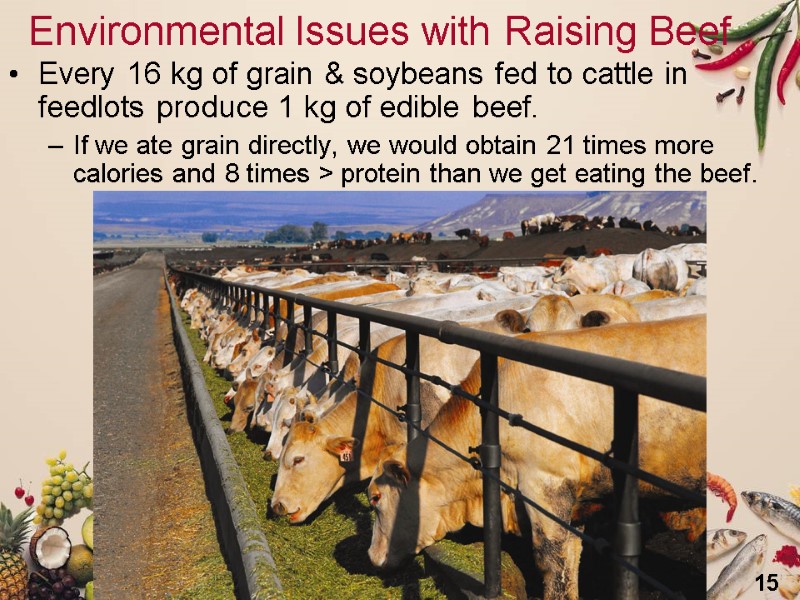
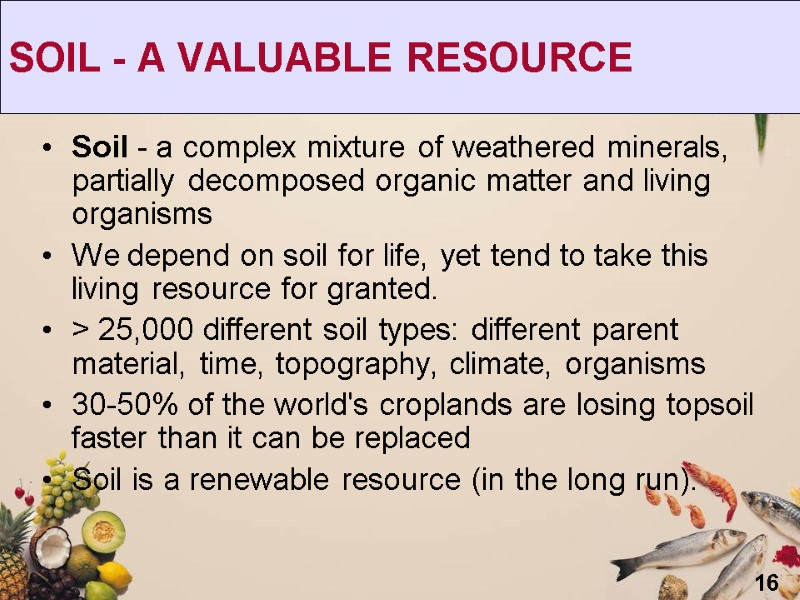
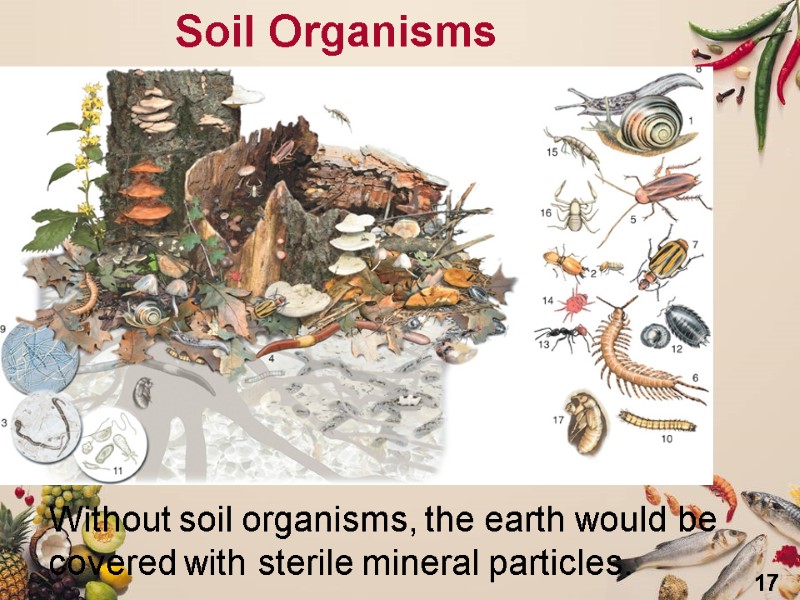
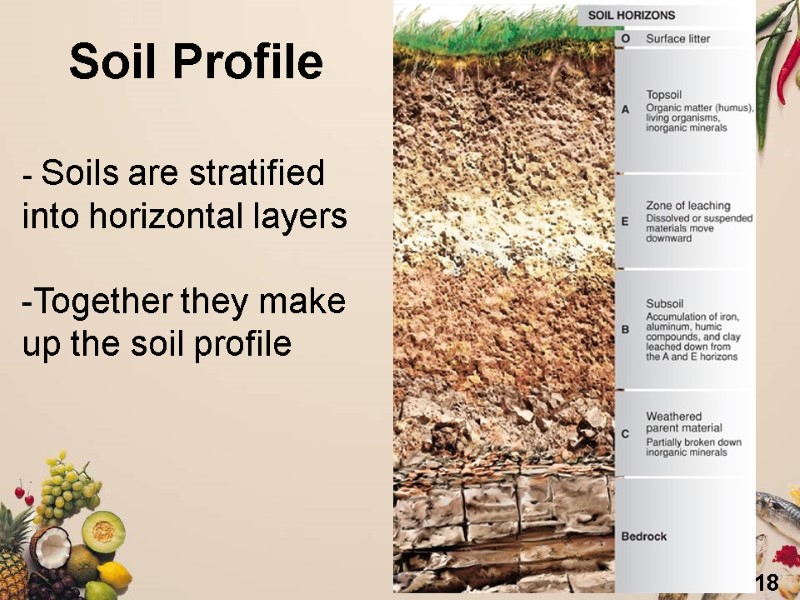
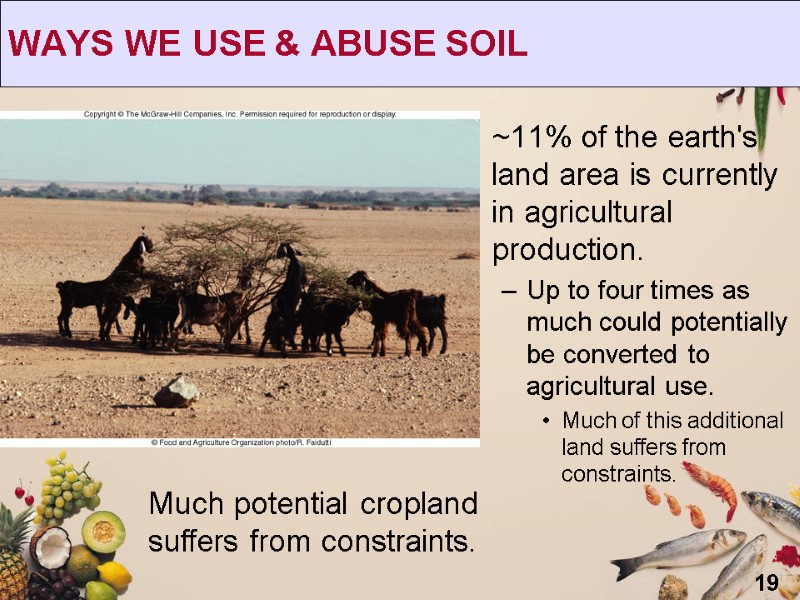
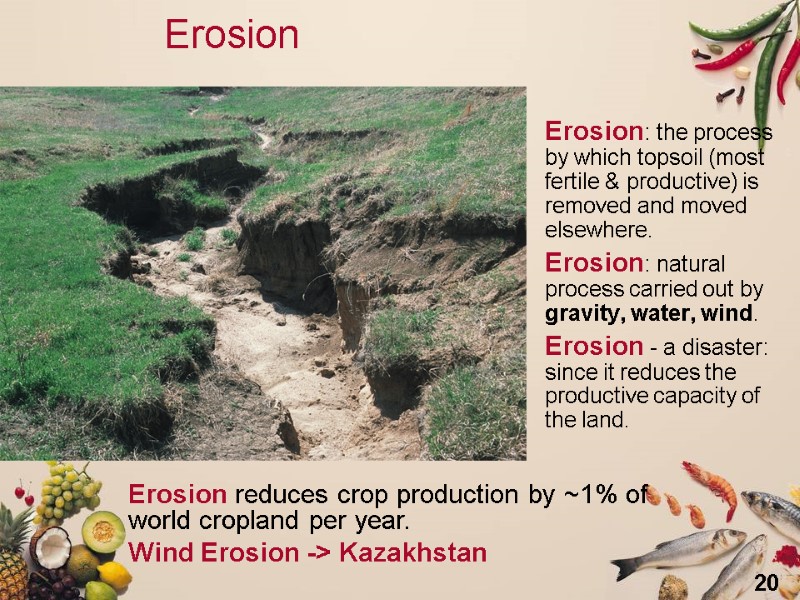
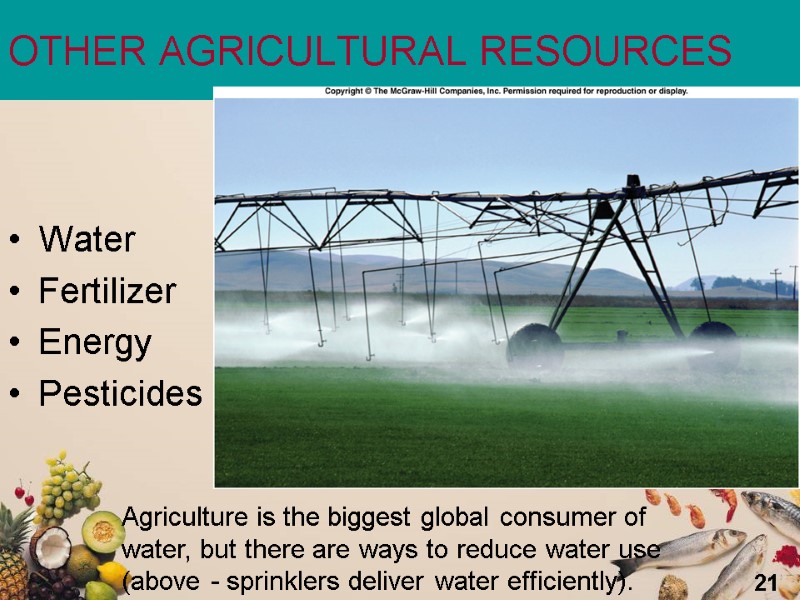
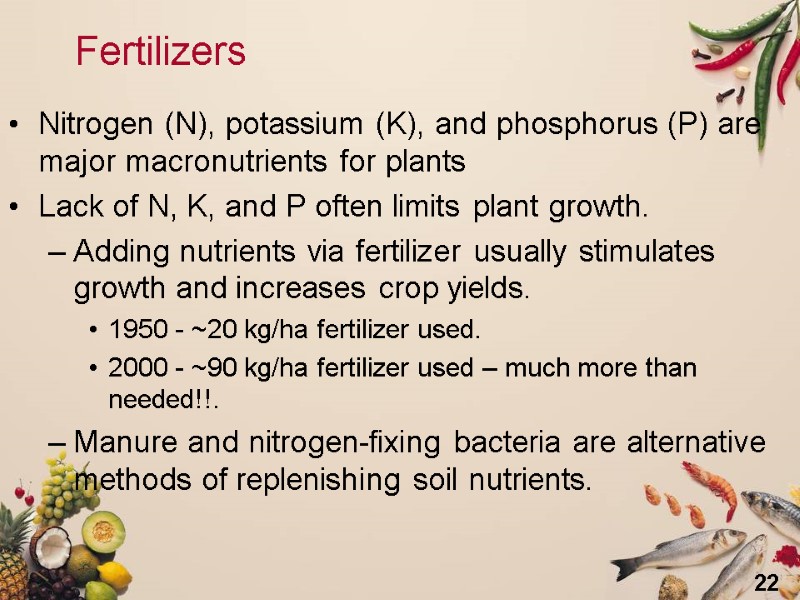
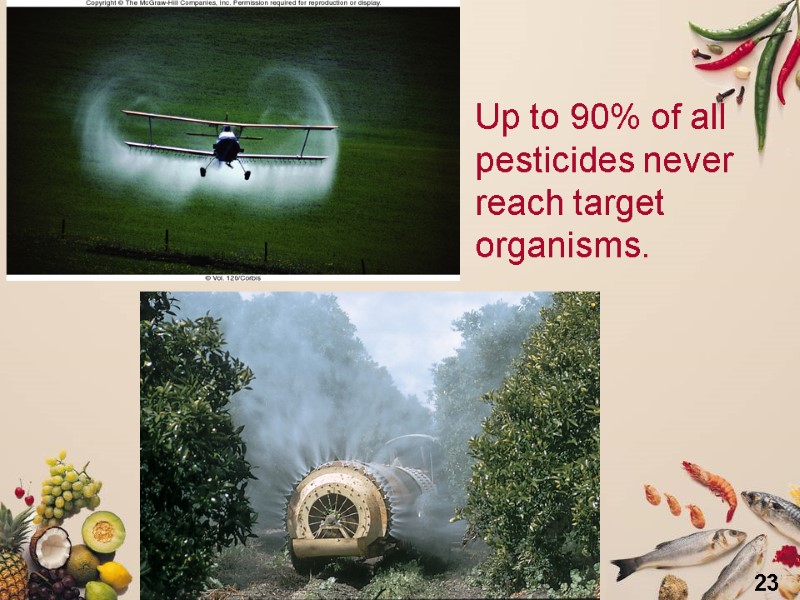
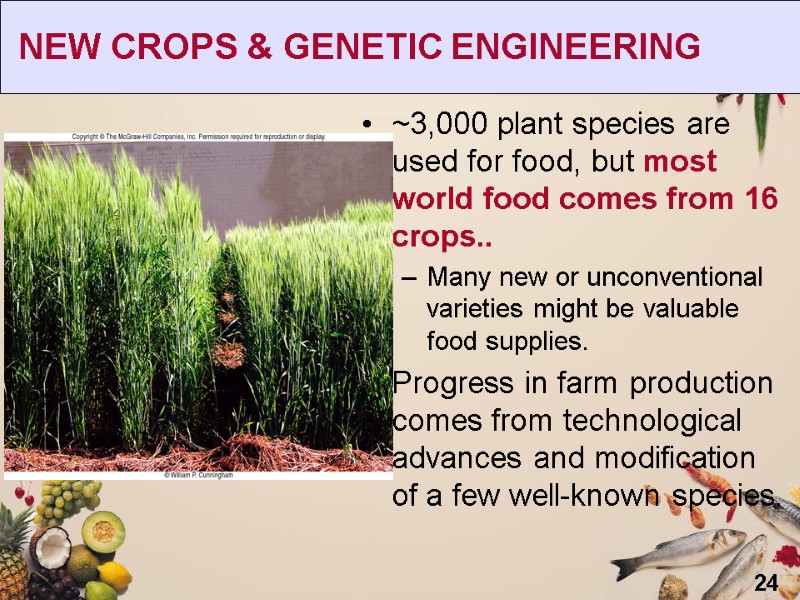
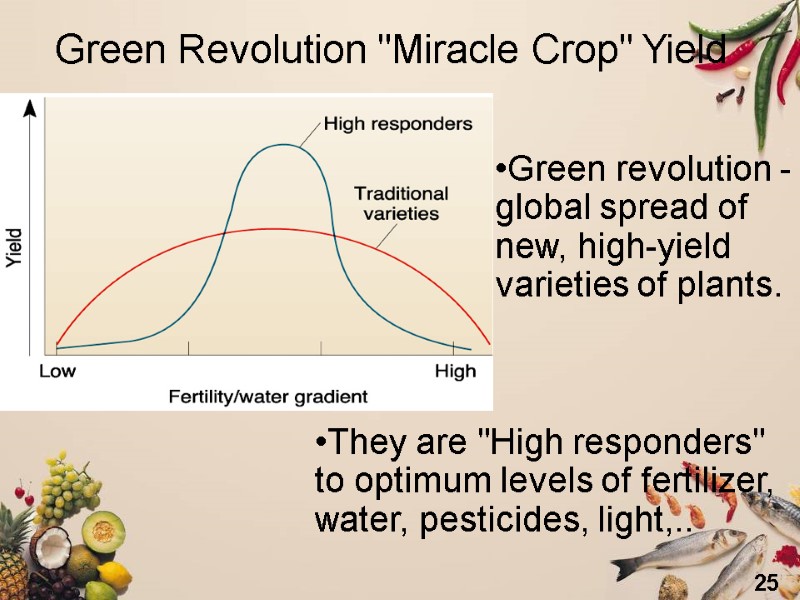
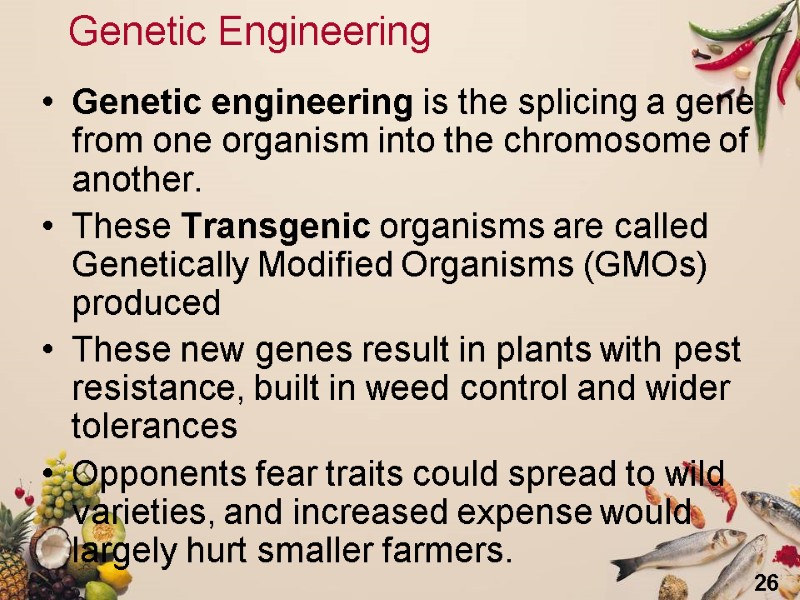
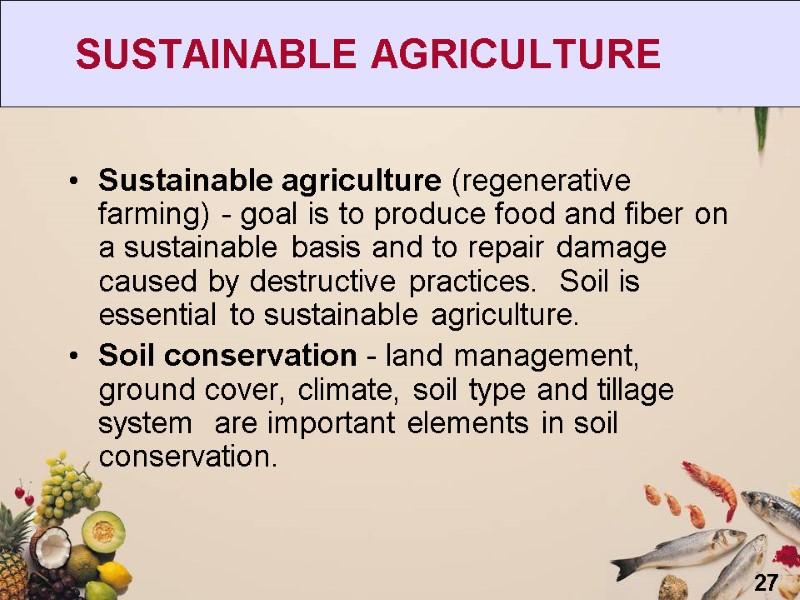
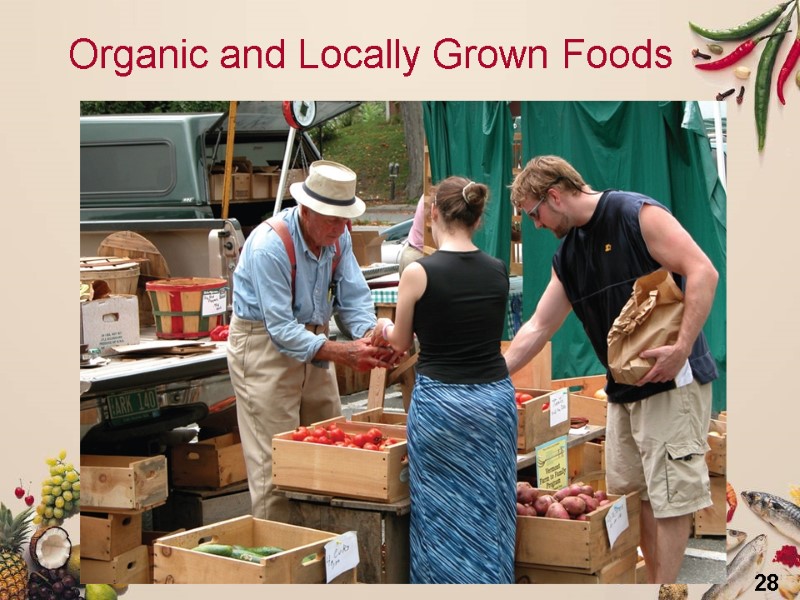
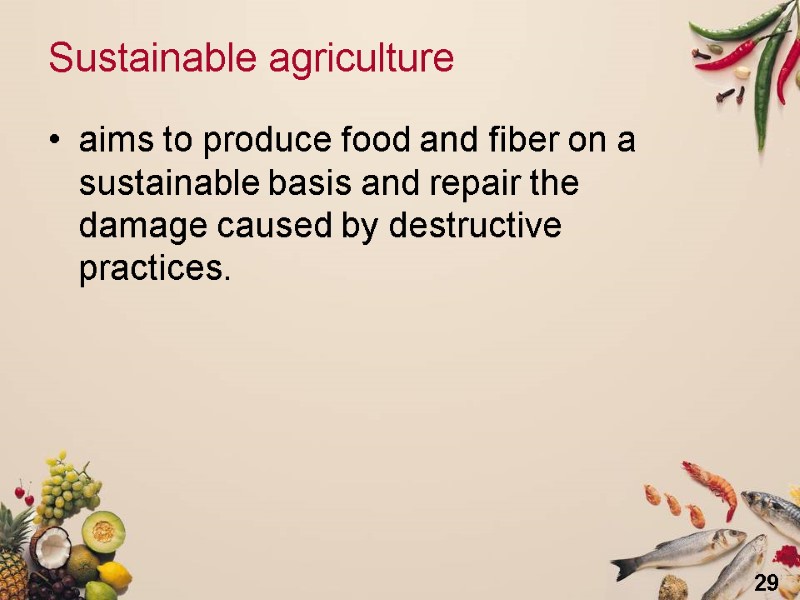
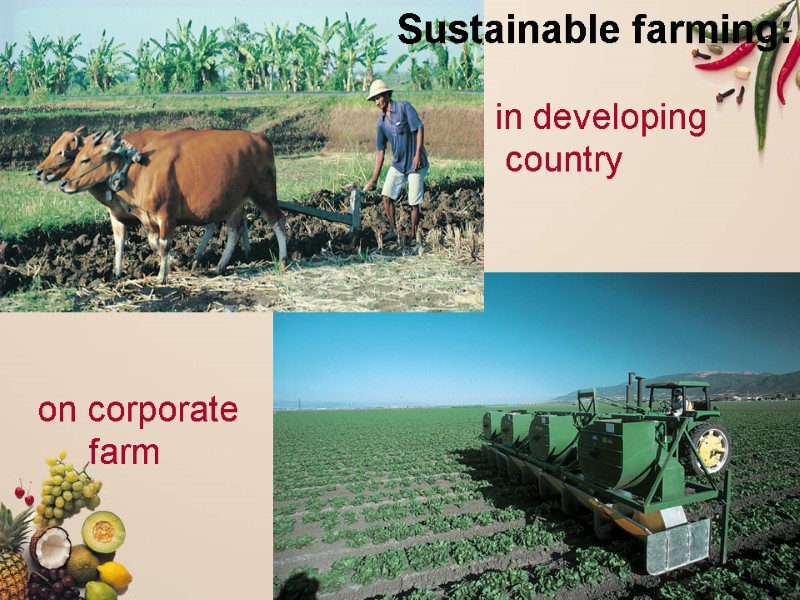
8736-gen1030_lecture5_su_2013.ppt
- Количество слайдов: 30
 KIMEP Department of General Education Introduction to Environmental Studies GEN 1030
KIMEP Department of General Education Introduction to Environmental Studies GEN 1030
 2 Lecture 5 Food and Agriculture
2 Lecture 5 Food and Agriculture
 3 Thou shouldst eat to live; not live to eat. Sokrates, Ancient Greek philosopher
3 Thou shouldst eat to live; not live to eat. Sokrates, Ancient Greek philosopher
 4 Outline Food and Nutrition Major Food Sources Soil: A Renewable Resource Other Agricultural Resources New Crops and Genetic Engineering Sustainable Agriculture
4 Outline Food and Nutrition Major Food Sources Soil: A Renewable Resource Other Agricultural Resources New Crops and Genetic Engineering Sustainable Agriculture
 5 World food supplies: 1950 versus 2000 Richer countries: the most common dietary problem is over-nutrition (obesity) Sub-Saharan Africa: food production has not kept pace with rapid population growth Asia: most rapid increase in crop production and this accompanied rapid population growth Chronic Hunger - within families that don't get enough to eat, women and children have the poorest diets. Nutrition and Food Supplies
5 World food supplies: 1950 versus 2000 Richer countries: the most common dietary problem is over-nutrition (obesity) Sub-Saharan Africa: food production has not kept pace with rapid population growth Asia: most rapid increase in crop production and this accompanied rapid population growth Chronic Hunger - within families that don't get enough to eat, women and children have the poorest diets. Nutrition and Food Supplies
 6 World Famines: large-scale food shortages, massive starvation. Causes are: Environmental conditions - natural disasters, drought, insects National politics - corruption, oppression Armed conflict Economics - price gouging, poverty, landlessness
6 World Famines: large-scale food shortages, massive starvation. Causes are: Environmental conditions - natural disasters, drought, insects National politics - corruption, oppression Armed conflict Economics - price gouging, poverty, landlessness
 7 Essential Nutrients Malnourishment - a nutritional imbalance caused by a lack of specific dietary components (wrong ratio of nutrients) polished rice is low in nutrients Undernourishment – < 90% of min caloric intake needed NUTRIENT DEFICIENCY: Protein deficiency diseases - kwashiorkor, marasmus. Iron deficiency (anemia) - most common in the world and most severe in India. Iodine deficiency - thyroid problems (goiter, etc) (problem in Almaty) Selenium deficiency – thyroid and heart problems (typical for China) Vitamin A deficiency – blindness, eye problems (beta-carotene – precursor of vit A)
7 Essential Nutrients Malnourishment - a nutritional imbalance caused by a lack of specific dietary components (wrong ratio of nutrients) polished rice is low in nutrients Undernourishment – < 90% of min caloric intake needed NUTRIENT DEFICIENCY: Protein deficiency diseases - kwashiorkor, marasmus. Iron deficiency (anemia) - most common in the world and most severe in India. Iodine deficiency - thyroid problems (goiter, etc) (problem in Almaty) Selenium deficiency – thyroid and heart problems (typical for China) Vitamin A deficiency – blindness, eye problems (beta-carotene – precursor of vit A)
 8 Protein Deficiency Diseases Kwashiorkor – "Displaced Child" Marasmus – “Waste Away" - lack of protein & calories.
8 Protein Deficiency Diseases Kwashiorkor – "Displaced Child" Marasmus – “Waste Away" - lack of protein & calories.
 9 Overnutrition - common dietary problem in wealthy countries Obesity vs Overweight BMI = m/h2: 25 < BMI < 30 overweight; BMI > 30 -> obesity
9 Overnutrition - common dietary problem in wealthy countries Obesity vs Overweight BMI = m/h2: 25 < BMI < 30 overweight; BMI > 30 -> obesity
 10 MAJOR FOOD SOURCES Wheat, rice, maize are food staples in the world. Wheat, rice, potatoes are staples in Russia and Kazakhstan. Potatoes, barley, oats and rye are staples in cool, moist climates. Cassava, sweet potatoes, other roots/ tubers are staples in warm wet climates. Fruits and vegetables contain high levels of vitamins, minerals, fiber and complex carbohydrates. Staple food – основные продукты питания Crops
10 MAJOR FOOD SOURCES Wheat, rice, maize are food staples in the world. Wheat, rice, potatoes are staples in Russia and Kazakhstan. Potatoes, barley, oats and rye are staples in cool, moist climates. Cassava, sweet potatoes, other roots/ tubers are staples in warm wet climates. Fruits and vegetables contain high levels of vitamins, minerals, fiber and complex carbohydrates. Staple food – основные продукты питания Crops
 11 Rational Nutrition Nutrition – intake of food needed to support life Rational Nutrition – nutrition that meets energy requirements of organism, providing necessary metabolism at optimal regime of food intake. Main components of Rational Nutrition: Balance (optimal amount and ratio of food components) Nutrition Timetable Energy Balance ~ 2,000 kcal per day needed for a female, 2,550 kcal – for a male.
11 Rational Nutrition Nutrition – intake of food needed to support life Rational Nutrition – nutrition that meets energy requirements of organism, providing necessary metabolism at optimal regime of food intake. Main components of Rational Nutrition: Balance (optimal amount and ratio of food components) Nutrition Timetable Energy Balance ~ 2,000 kcal per day needed for a female, 2,550 kcal – for a male.
 12 6 Main Nutrition Components Proteins, Fats, Carbohydrates – Energy! Fiber, Vitamins, Minerals & Water – no E! Fuel value of food: Energy value: Fat = 9 kcal per gram Protein = 4 kcal per gram Carbohydrates = 4 kcal per gram Note: Alcohol: =7 kcal /g! ∆E = Ein - Econs ≤ 5% Daily nutrients ratio: Carbohydrates 40 to 60% Fat 20 to 30% Protein 10 to 15%
12 6 Main Nutrition Components Proteins, Fats, Carbohydrates – Energy! Fiber, Vitamins, Minerals & Water – no E! Fuel value of food: Energy value: Fat = 9 kcal per gram Protein = 4 kcal per gram Carbohydrates = 4 kcal per gram Note: Alcohol: =7 kcal /g! ∆E = Ein - Econs ≤ 5% Daily nutrients ratio: Carbohydrates 40 to 60% Fat 20 to 30% Protein 10 to 15%
 13 Eating a Balanced Diet - Food Pyramid
13 Eating a Balanced Diet - Food Pyramid
 14 Meat, Milk, and Seafood Milk & meat: highly prized, but inequitable distribution. Developed countries: 20% of world population, but consume 80% of meat & milk production. LDCs produce 60% of world's milk & meat. ~90% of the grain grown in North America used to feed cattle, hogs, poultry, & other animals! Seafood is an important protein source in many countries. This food source is threatened by over-harvesting and habitat destruction.
14 Meat, Milk, and Seafood Milk & meat: highly prized, but inequitable distribution. Developed countries: 20% of world population, but consume 80% of meat & milk production. LDCs produce 60% of world's milk & meat. ~90% of the grain grown in North America used to feed cattle, hogs, poultry, & other animals! Seafood is an important protein source in many countries. This food source is threatened by over-harvesting and habitat destruction.
 15 Environmental Issues with Raising Beef Every 16 kg of grain & soybeans fed to cattle in feedlots produce 1 kg of edible beef. If we ate grain directly, we would obtain 21 times more calories and 8 times > protein than we get eating the beef.
15 Environmental Issues with Raising Beef Every 16 kg of grain & soybeans fed to cattle in feedlots produce 1 kg of edible beef. If we ate grain directly, we would obtain 21 times more calories and 8 times > protein than we get eating the beef.
 16 SOIL - A VALUABLE RESOURCE Soil - a complex mixture of weathered minerals, partially decomposed organic matter and living organisms We depend on soil for life, yet tend to take this living resource for granted. > 25,000 different soil types: different parent material, time, topography, climate, organisms 30-50% of the world's croplands are losing topsoil faster than it can be replaced Soil is a renewable resource (in the long run).
16 SOIL - A VALUABLE RESOURCE Soil - a complex mixture of weathered minerals, partially decomposed organic matter and living organisms We depend on soil for life, yet tend to take this living resource for granted. > 25,000 different soil types: different parent material, time, topography, climate, organisms 30-50% of the world's croplands are losing topsoil faster than it can be replaced Soil is a renewable resource (in the long run).
 17 Soil Organisms Without soil organisms, the earth would be covered with sterile mineral particles.
17 Soil Organisms Without soil organisms, the earth would be covered with sterile mineral particles.
 18 - Soils are stratified into horizontal layers Together they make up the soil profile Soil Profile
18 - Soils are stratified into horizontal layers Together they make up the soil profile Soil Profile
 19 WAYS WE USE & ABUSE SOIL Much potential cropland suffers from constraints. ~11% of the earth's land area is currently in agricultural production. Up to four times as much could potentially be converted to agricultural use. Much of this additional land suffers from constraints.
19 WAYS WE USE & ABUSE SOIL Much potential cropland suffers from constraints. ~11% of the earth's land area is currently in agricultural production. Up to four times as much could potentially be converted to agricultural use. Much of this additional land suffers from constraints.
 20 Erosion Erosion: the process by which topsoil (most fertile & productive) is removed and moved elsewhere. Erosion: natural process carried out by gravity, water, wind. Erosion - a disaster: since it reduces the productive capacity of the land. Erosion reduces crop production by ~1% of world cropland per year. Wind Erosion -> Kazakhstan
20 Erosion Erosion: the process by which topsoil (most fertile & productive) is removed and moved elsewhere. Erosion: natural process carried out by gravity, water, wind. Erosion - a disaster: since it reduces the productive capacity of the land. Erosion reduces crop production by ~1% of world cropland per year. Wind Erosion -> Kazakhstan
 21 OTHER AGRICULTURAL RESOURCES Water Fertilizer Energy Pesticides Agriculture is the biggest global consumer of water, but there are ways to reduce water use (above - sprinklers deliver water efficiently).
21 OTHER AGRICULTURAL RESOURCES Water Fertilizer Energy Pesticides Agriculture is the biggest global consumer of water, but there are ways to reduce water use (above - sprinklers deliver water efficiently).
 22 Fertilizers Nitrogen (N), potassium (K), and phosphorus (P) are major macronutrients for plants Lack of N, K, and P often limits plant growth. Adding nutrients via fertilizer usually stimulates growth and increases crop yields. 1950 - ~20 kg/ha fertilizer used. 2000 - ~90 kg/ha fertilizer used – much more than needed!!. Manure and nitrogen-fixing bacteria are alternative methods of replenishing soil nutrients.
22 Fertilizers Nitrogen (N), potassium (K), and phosphorus (P) are major macronutrients for plants Lack of N, K, and P often limits plant growth. Adding nutrients via fertilizer usually stimulates growth and increases crop yields. 1950 - ~20 kg/ha fertilizer used. 2000 - ~90 kg/ha fertilizer used – much more than needed!!. Manure and nitrogen-fixing bacteria are alternative methods of replenishing soil nutrients.
 23 Up to 90% of all pesticides never reach target organisms.
23 Up to 90% of all pesticides never reach target organisms.
 24 NEW CROPS & GENETIC ENGINEERING ~3,000 plant species are used for food, but most world food comes from 16 crops.. Many new or unconventional varieties might be valuable food supplies. Progress in farm production comes from technological advances and modification of a few well-known species.
24 NEW CROPS & GENETIC ENGINEERING ~3,000 plant species are used for food, but most world food comes from 16 crops.. Many new or unconventional varieties might be valuable food supplies. Progress in farm production comes from technological advances and modification of a few well-known species.
 25 Green Revolution "Miracle Crop" Yield They are "High responders" to optimum levels of fertilizer, water, pesticides, light,.. Green revolution - global spread of new, high-yield varieties of plants.
25 Green Revolution "Miracle Crop" Yield They are "High responders" to optimum levels of fertilizer, water, pesticides, light,.. Green revolution - global spread of new, high-yield varieties of plants.
 26 Genetic Engineering Genetic engineering is the splicing a gene from one organism into the chromosome of another. These Transgenic organisms are called Genetically Modified Organisms (GMOs) produced These new genes result in plants with pest resistance, built in weed control and wider tolerances Opponents fear traits could spread to wild varieties, and increased expense would largely hurt smaller farmers.
26 Genetic Engineering Genetic engineering is the splicing a gene from one organism into the chromosome of another. These Transgenic organisms are called Genetically Modified Organisms (GMOs) produced These new genes result in plants with pest resistance, built in weed control and wider tolerances Opponents fear traits could spread to wild varieties, and increased expense would largely hurt smaller farmers.
 27 SUSTAINABLE AGRICULTURE Sustainable agriculture (regenerative farming) - goal is to produce food and fiber on a sustainable basis and to repair damage caused by destructive practices. Soil is essential to sustainable agriculture. Soil conservation - land management, ground cover, climate, soil type and tillage system are important elements in soil conservation.
27 SUSTAINABLE AGRICULTURE Sustainable agriculture (regenerative farming) - goal is to produce food and fiber on a sustainable basis and to repair damage caused by destructive practices. Soil is essential to sustainable agriculture. Soil conservation - land management, ground cover, climate, soil type and tillage system are important elements in soil conservation.
 28 Organic and Locally Grown Foods
28 Organic and Locally Grown Foods
 29 Sustainable agriculture aims to produce food and fiber on a sustainable basis and repair the damage caused by destructive practices.
29 Sustainable agriculture aims to produce food and fiber on a sustainable basis and repair the damage caused by destructive practices.
 30 Sustainable farming: in developing country on corporate farm
30 Sustainable farming: in developing country on corporate farm

